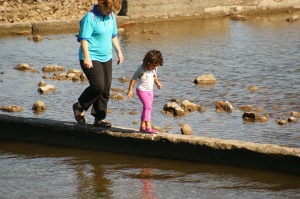
As a parent and a pediatrician, I’ve experienced that nutrition and topics related to eating generate a lot of discussions both at home and my office. Unfortunately, nutrition science is often misunderstood and victim of fads and inadequate research. While the main goal of nutrition in childhood is adequate growth, development and avoidance of nutritional deficiencies, many well-meaning parents often place their child on a special diet without discussion from a professional.
I have summarized three types of diets followed by a growing number of patients and their families:
- Vegan/Vegetarian:
Vegan diet avoids all animal products like eggs, dairy, meats and even honey. Vegetarian diet is mostly plant based but could include dairy and eggs. Research has shown that both vegan and vegetarian diets are safe in kids. Most kids on these diets show normal growth and sexual maturation. They tend to be leaner and shorter between ages 1 and 3 but catch up by 9-10 years of age. However, there are specific nutrients that could be missing in these diets-
- Vitamin B 12- a supplement is needed if child is vegan. Vegetarian children who consume at least 16 oz of dairy need not worry. If mom is breastfeeding and a vegan, then her baby needs a Vit B 12 supplement.
- Calcium- Vegan children are prone to developing calcium deficiency and need to consume foods rich in calcium e.g.: fortified cereal, soy milk, leafy vegetables, black beans and almonds.
- Iron- This is the most common nutritional deficiency in vegan/vegetarian kids. Iron deficiency can affect the development, growth, cognitive and athletic performance of kids. Additionally, plant sources of iron are not as readily available to the body. Menstruating vegetarian girls are at highest risk of iron deficiency. Foods like white bean, green vegetables, quinoa, pumpkin seeds and cashews are good plant sources of iron but I would recommend taking an OTC iron supplement daily especially in menstruating teens.
- Protein- While an average American diet provides 2-3 times the required protein, plant based proteins don’t always provide all the essential building blocks (amino acids). Therefore, it’s important to eat a variety of plant based proteins like lentils, black beans, nuts, chick peas, whole wheat and soy.
Benefits of a vegan/vegetarian diet:
Overall, plant based diets reduce the risk of chronic health diseases like hypertension, Type 2 diabetes, cancer, bad cholesterol and high BMI. As long as they are well planned, they meet all nutrient needs.
- Gluten Free:
Gluten is a type of protein found in certain grains like wheat, rye, barley, couscous, malt and brewer’s yeast. Some people have an autoimmune condition called Celiac disease or a specific wheat allergy and should stay off gluten. However, some people decide to go on a gluten free diet for perceived health benefits or a poorly understood condition called ‘non celiac gluten sensitivity.’ Gluten free diet has inherent risks like increased intake of saturated fats, sugars and is low in fiber. This can increase risk of obesity, metabolic syndrome and heart disease as an adult. Gluten free snacks are not necessarily healthy as they might have more sugar, salt and less fiber. Gluten free diet is also more expensive. At this point, we don’t recommend gluten free diet for kids unless they have a diagnosis of Celiac disease.
- Low Carbohydrate:
In recent years, a low carbohydrate diet (< 130 gms) has become popular with adults and adolescents. Atkins, paleo and ketogenic are all low carbohydrate diets. Just as proteins, fats and vitamins are important for kids, the right kind of carbohydrate is important for their growth and development. Complex carbohydrates like whole grains, fruits, vegetables and beans are all good sources of carbohydrates for kids. Avoid refined carbohydrates like sugar, white flour, white rice and white pasta. High fat, high protein and a very low carbohydrate diet in kids can affect their growth; cause headaches, constipation and dizziness.
In a nutshell, while special diets might help adults, be careful before starting a special diet for your child. A growing child’s nutritional needs could be different from yours. Please have a detailed discussion with your child’s pediatrician.
Sangeeta Elhence, M.D






